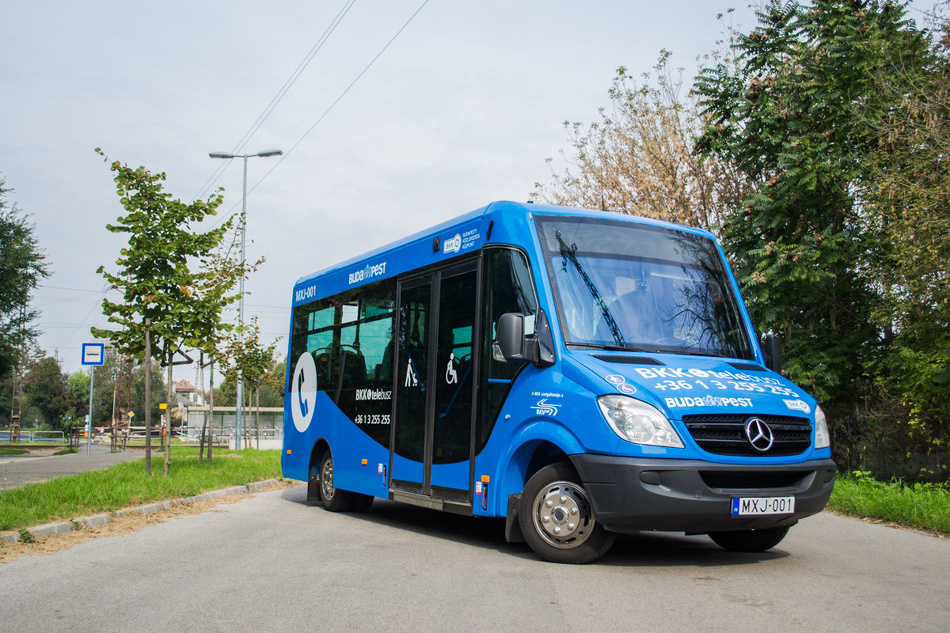Online platform for DRT (Budapest, Hungary)

Area: periurban
Date implemented: 2019-2021
How long from concept to implementation: 4-5 years
Relation between efforts undertaken and benefits achieved: good
What was done and how: In the framework of the SMACKER research innovation project, Budapest aimed to develop a Demand Responsive Transport (DRT) system. The Centre for Budapest Transport (BKK) operates seven fully or partially demand-responsive lines. The BKK has launched an online service request system for the DRT service. This system has been available for the public since December 2020 through https://telebusz.bkk.hu/. The new web-based application gives an opportunity to upgrade the obsolete system. After registration, passengers can send their request quickly through their PC or smartphone, so in the future the communication between dispatchers, passengers and the bus drives would be easier. Instead of the time-consuming procedures, the participants of the system could use only the new application. The platform is available in Hungarian and in English.
Why it worked to 'fast track' the innovation/measure: Inadequate and under-used services, excessive costs, lack of last-mile services and proper intermodality, poor communication and information to users and car commuting are the challenges that many central European regions face. This project addressed those disparities to promote public transport and mobility services that are demand-responsive and that connect local and regional systems to main corridors and transport nodes. Soft measures (e.g. behaviour change campaigns) and hard measures (e.g. mobility service pilots) were both used to identify and promote eco-friendly solutions for public transport.
Lessons learnt: importance of involving the communities concerned, continuously encourage the people to use the new tools.
Tips for replication: Demand responsive services have several advantages for both the operator and the customers. Keep in mind the importance of the proper communication and the continuous monitoring of the applied vehicle size, headway and timetable based/demand responsive time periods.
Sources or links:

Date implemented: 2019-2021
How long from concept to implementation: 4-5 years
Relation between efforts undertaken and benefits achieved: good
What was done and how: In the framework of the SMACKER research innovation project, Budapest aimed to develop a Demand Responsive Transport (DRT) system. The Centre for Budapest Transport (BKK) operates seven fully or partially demand-responsive lines. The BKK has launched an online service request system for the DRT service. This system has been available for the public since December 2020 through https://telebusz.bkk.hu/. The new web-based application gives an opportunity to upgrade the obsolete system. After registration, passengers can send their request quickly through their PC or smartphone, so in the future the communication between dispatchers, passengers and the bus drives would be easier. Instead of the time-consuming procedures, the participants of the system could use only the new application. The platform is available in Hungarian and in English.
Why it worked to 'fast track' the innovation/measure: Inadequate and under-used services, excessive costs, lack of last-mile services and proper intermodality, poor communication and information to users and car commuting are the challenges that many central European regions face. This project addressed those disparities to promote public transport and mobility services that are demand-responsive and that connect local and regional systems to main corridors and transport nodes. Soft measures (e.g. behaviour change campaigns) and hard measures (e.g. mobility service pilots) were both used to identify and promote eco-friendly solutions for public transport.
Lessons learnt: importance of involving the communities concerned, continuously encourage the people to use the new tools.
Tips for replication: Demand responsive services have several advantages for both the operator and the customers. Keep in mind the importance of the proper communication and the continuous monitoring of the applied vehicle size, headway and timetable based/demand responsive time periods.
Sources or links:







